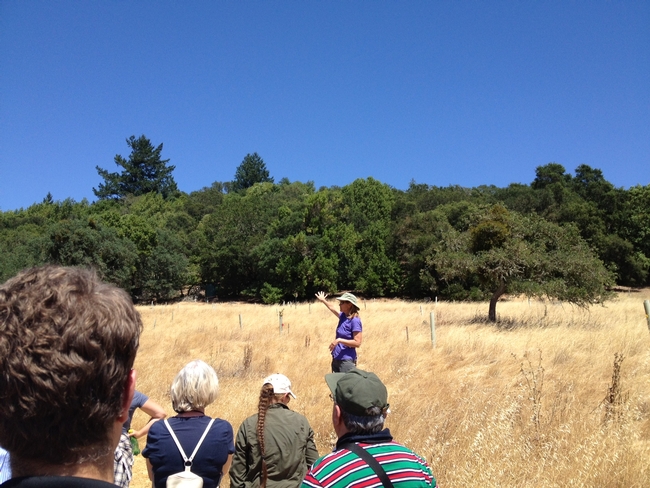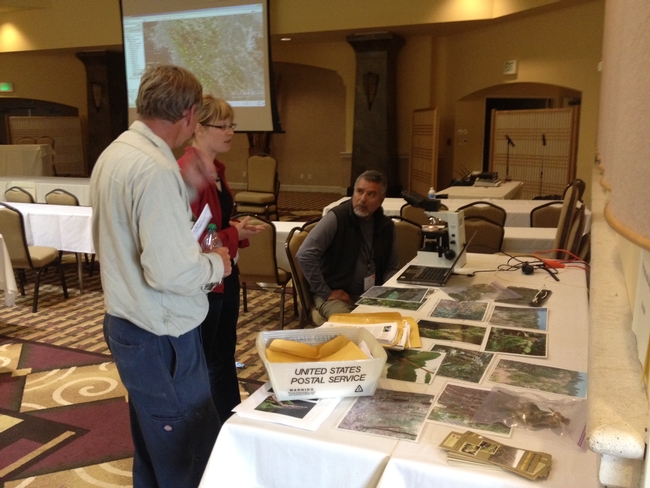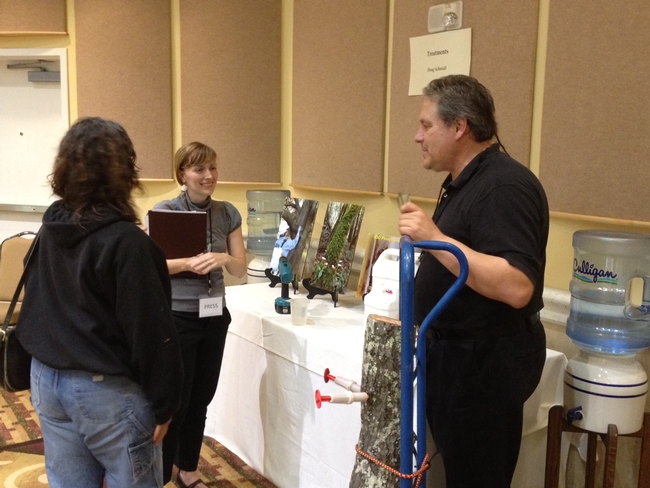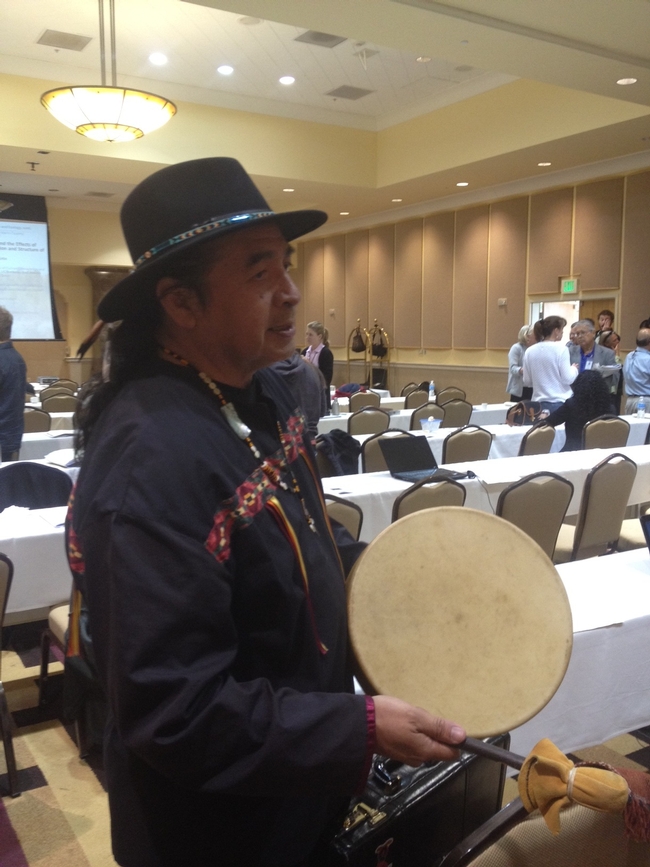The 5th Sudden Oak Death Science Symposium, held in Petaluma, CA June 19 – 22, 2012, brought together researchers, regulators, land managers, and industry representatives from throughout the world working on Sudden Oak Death (SOD), Phytophthora ramorum (the pathogen known to cause SOD), and other related forest and nursery pests. The Symposium included 52 talks and 25 posters from top researchers around the globe as well as a “SOD: Biosecurity Concerns and Forest Restoration” field trip, where attendees heard about international plant hunters and biosecurity risks related to plant hunting and walked through a local preserve, learning about long-term system changes and restoration efforts following SOD outbreaks. There was also a community “Ask the Expert” evening session where the public was able to talk one on one with researchers and outreach specialists, and a special tanoak session was offered on Friday, focusing on the history, values, and ecology of tanoak.
Highlight findings from the meeting included the discovery of a 4th P. ramorum lineage, the announcement that pathogen sporulation has been found on non-symptomatic Japanese larch needles, and learning that 85 percent of the Marin Municipal Water District’s susceptible habitat is now infested.





If you missed the Symposium, be sure to visit the website (http://ucanr.org/sites/sod5/) where you can access the agenda, book of abstracts, and link to the archived live stream that was made available throughout the meeting for those unable to attend.
